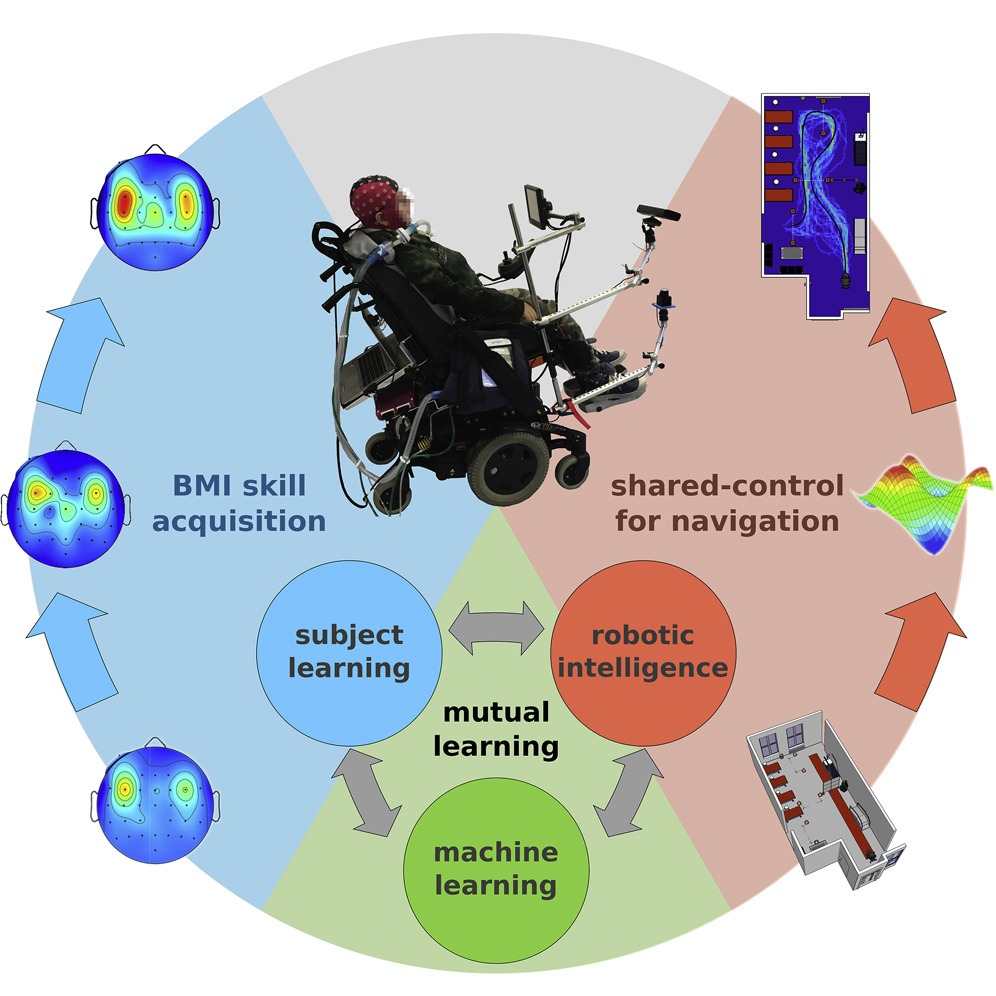Published on
Updated
Reading 1 min.
A Texas research team recently developed a wheelchair that can be steered by thought.
It is an invention that could revolutionize the daily lives of people with disabilities. Texan researchers have just developed intelligent wheelchairs for quadriplegic individuals.
A brain-machine interface algorithm
As part of this study, Prof. José del R. Millán and his colleagues recruited three people with quadriplegia. All of them had to wear a “cap”, capable of detecting their brain activities by electroencephalography (EEG) and converting them into mechanical commands (via a brain-machine interface device).

The participants then had to undergo “training” three times a week for 2 to 5 months. They were asked to control the direction of the chair by thinking about moving certain parts of their body (in particular, they had to think about moving both hands to turn left and both feet to turn right).
Result: During the first training session, all three participants showed similar levels of “control”, around 43%-55%.
Then, the first candidate quickly mastered the wheelchair perfectly (with an accuracy of 95%).
The team also observed an improvement in the accuracy of the third participant (to 98%) at the midpoint.
A cortical reorganization induced by the learning of the participants
The electroencephalography of participants 1 and 3 (a technique for measuring the electrical activity of the brain in real time) indeed revealed brain changes, due to learning.
“We see from the EEG results that the subject has consolidated an ability to modulate different parts of their brain to generate one pattern to “go left” and a different pattern “to go right”., assures Professor José del R. Millán. “We therefore believe that there is a cortical reorganization that occurred as a result of the participants’ learning process..”
Differences in results between participants
Despite these promising early results, Participant 2 showed no significant brain changes. He also failed the wheelchair tests. Further work is therefore needed to better understand the potential of this brain-machine algorithm.
